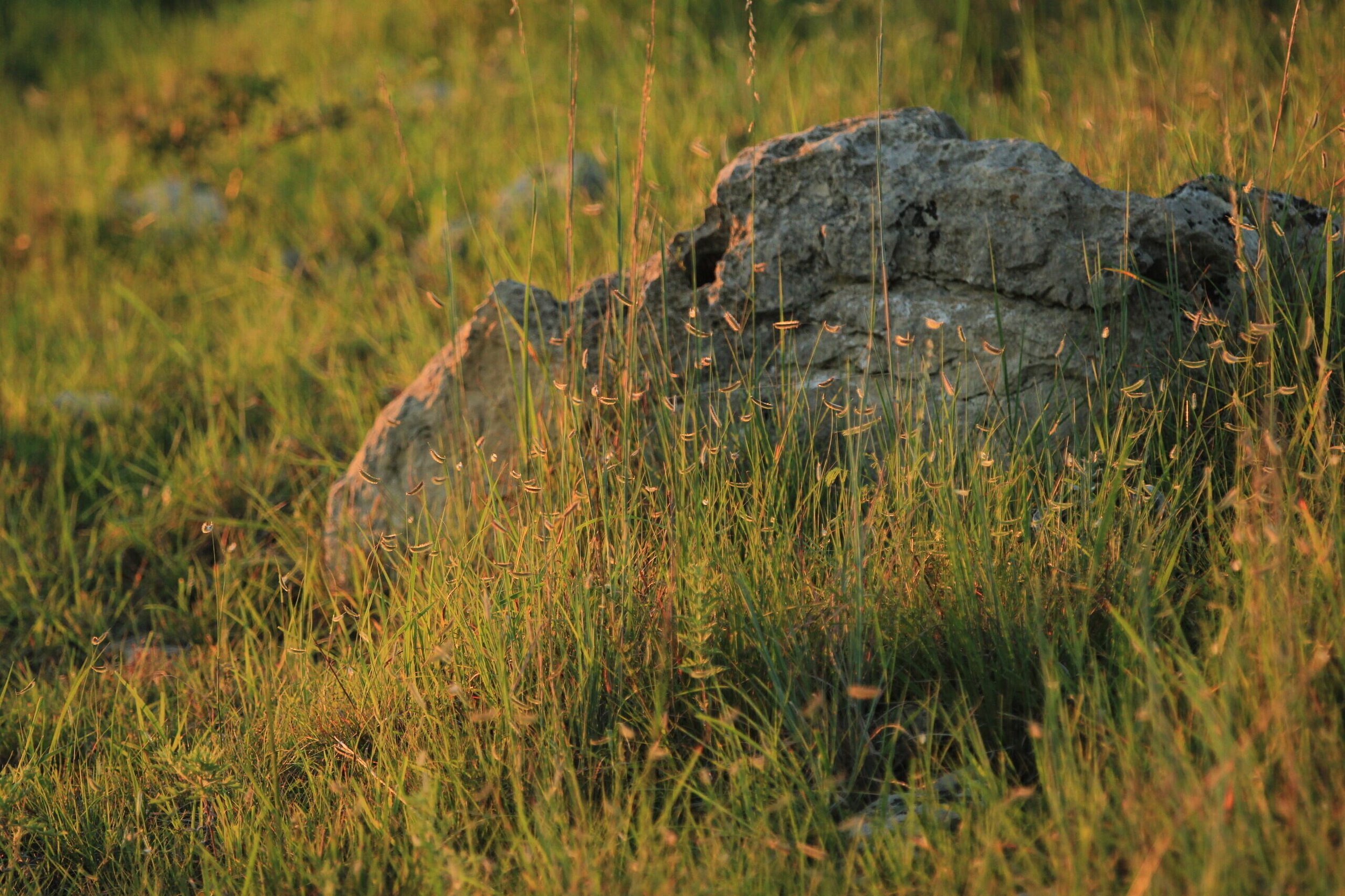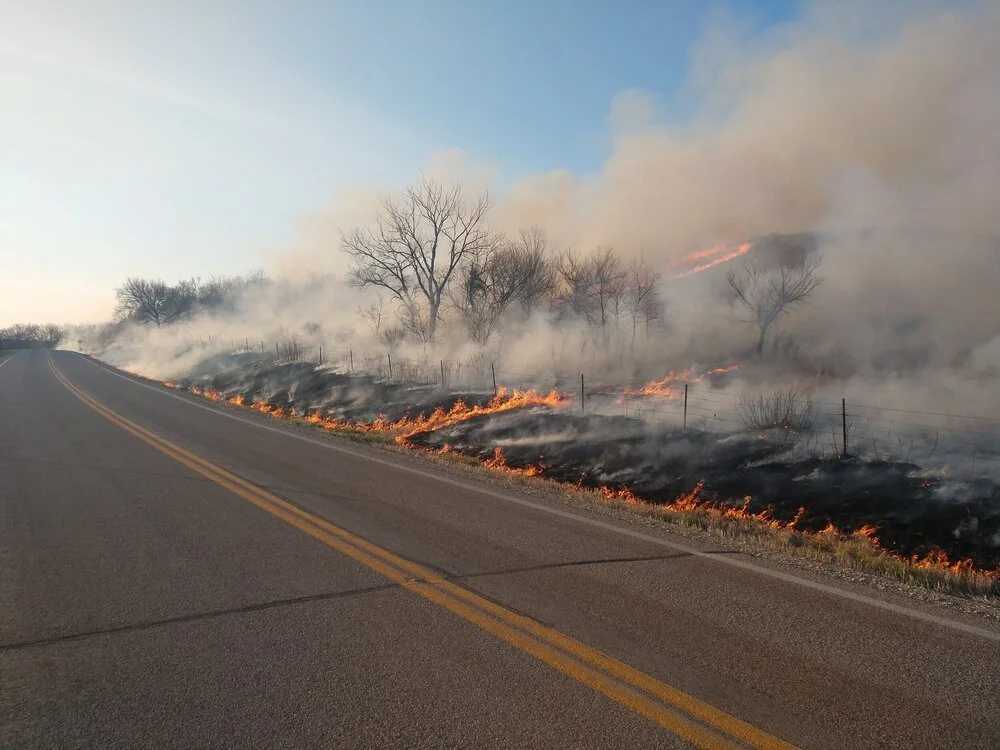
Fire, Prairie, and the Beauty of Perpetuity
Griffin Wyrick Prairie landowners talk about their relationship with the land they have protected.
On a recent Tuesday evening, Charlie Griffin and Denise Wyrick surveyed the conditions on their 200 acres of native prairie in the northern Flint Hills near Manhattan, and said, “let’s light it.”
Griffin and Wyrick were conducting a controlled burn, a common land management practice that helps keep prairies healthy by curbing the growth of invasive plants and deciduous trees.
“It’s a matter of timing,” said Griffin. “You have to have the right moisture, lack of rain, and lack of wind. If you miss an opportunity to burn, sometimes it can be weeks, or even next year, before time is right again.”
Griffin and Wyrick, who permanently protected their 200 acres of native prairie in 2005 through a conservation easement with the Kansas Land Trust, try to burn their prairie annually, and the two of them usually conduct the burn themselves. The task involves a lot of walking up and down the hills on their land throughout the evening, and into the dark of night, to ensure the fire remains under control. Griffin said it is a wonderful time to be out on the land and to explore parts of the pasture that they don’t see regularly.
“Controlled burning is a part of life in the Flint Hills of Kansas,” said Griffin. “The more you learn about the Flint Hills as prairie, the more you understand the relationship between land and fire here, and you come to understand that prairie is prairie because of fire.”
Griffin said that when he bought this land in 1989, he and Wyrick knew nothing about conservation easements. It was their friend (and KLT board member) Kelly Kindscher who suggested they might consider protecting their property this way.
Griffin acknowledged that rural landowners often have hesitations about putting an easement on their land because they think it means giving up control of decisions about their property. However, it didn’t take Griffin and Wyrick long to understand what Griffin called the “purity” of the Kansas Land Trust’s goals.
“The more we learned, the more we trusted it, and those concerns all went away,” said Griffin. “We came to understand that we weren’t giving up control of anything other than someone’s ability to come in in the future and build a confinement animal facility, or a mini mart or a McMansion on the land, which is exactly what we never want to see.”
Griffin said that he especially loves the notion of “in perpetuity,” which is the central concept of all Kansas Land Trust conservation easements, and is a legal term for “forever.”
“It’s a beautiful concept in my mind,” said Griffin. “That the easement allows this land to remain prairie in perpetuity, no matter how many times it passes hands.”
The land that Griffin and Wyrick have protected, and that they work hard to care for with regular controlled burns, is much more than just property to them. It’s an entity that they have built a relationship with.
“We have lived here, we have walked these hills, we have been a part of the yearly cycles,” Griffin said. “I think it’s worth calling out that this is about the land itself, and the sacred relationship we have with that land. Protecting it is a way to honor that for the future.”



